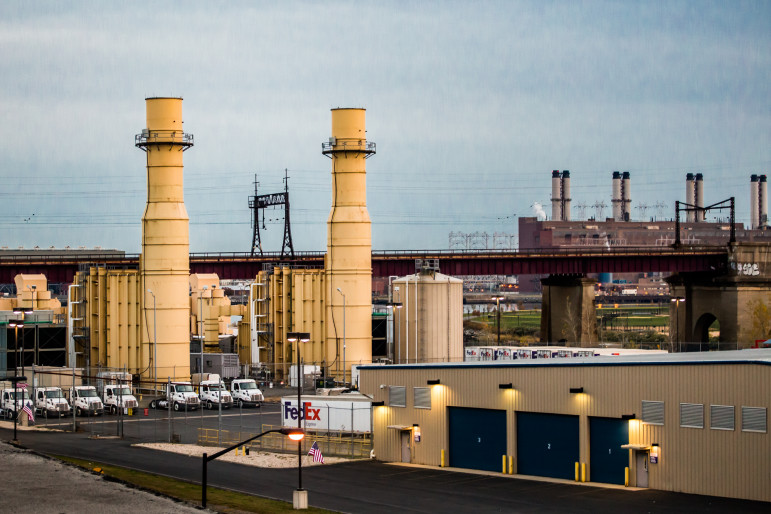‘Under the CCIA, there would be fees on air pollution emissions, in recognition of the negative externalities they produce. Such fees are profoundly fair: it is not so much a punitive tax as it is correcting for market distortions by incorporating the costs society incurs from air pollution.’

Adi Talwar
The Climate and Community Investment Act would impose fees on air pollution emissions.Earth Day is upon us. We should all take a moment to recommit to protecting our environment. And there is no better way to do that than by tackling climate change. While our attention has turned to COVID-19, climate change represents our greatest existential threat. If we do not address it, we will witness increasingly catastrophic consequences, including adverse weather events, food supply disruptions, rising sea levels, and the possibility of mass extinction. And no amount of disinformation spread by the fossil fuel industry can keep that from being reality.
As with so many issues today, these problems are exacerbated by race and class. When it comes to pollution, low-income communities and communities of color tend to bear the brunt. Nationally, people of color comprise 56 percent of people in neighborhoods with a facility releasing toxins, compared to 30 percent in neighborhoods without such a facility. Closer to home, a study of the Bronx found that people living near areas with noxious uses are 30 percent more likely to be low-income and 13 percent more likely to be people of color.
Deferring action and burying our heads in the sand is not an option if we want a hospitable planet for our children. That is why, as chairman of the Senate Energy and Telecommunications Committee, I have taken the lead by introducing the Climate and Community Investment Act (CCIA), which would transition New York State to 100 percent clean energy. At the same time, the act would drastically increase the state’s clean energy capacity, bringing us to a sustainable future.
Under the CCIA, there would be fees on air pollution emissions, in recognition of the negative externalities they produce. Such fees are profoundly fair: it is not so much a punitive tax as it is correcting for market distortions by incorporating the costs society incurs from air pollution. By one analysis, if these costs were factored in, coal power would cost as much as triple the current rate, and natural gas would cost 75-100 percent more. This alone would help reduce New York’s carbon footprint by making dirty energy sources less competitive and efficiency upgrades more enticing. And before anyone jumps down my throat saying this is a regressive tax, the act also uses some of the fee revenue for tax credits for low-income households and small businesses to offset higher utility bills.
 CityViews are readers’ opinions, not those of City Limits. Add your voice today!
CityViews are readers’ opinions, not those of City Limits. Add your voice today!
But the CCIA goes a step further, investing billions in fee revenue into clean energy and infrastructure that improves our sustainability. Projects would include increasing our capacity to produce clean energy, like solar and wind, along with large scale improvements in energy efficiency. This would go a long way to propelling the state to a sustainable, clean energy future.
Besides promoting the clean energy economy, the projects CCIA finances will also create jobs, jobs, and jobs. To be more precise, an estimated 150,000 jobs in the first 10 years. And provisions would require that projects pay workers prevailing wages and incorporate apprenticeships that would give thousands a ticket to the middle class. To fuel the job creation engine even further, any facility receiving $1 million or more in subsidies would also have to pay its building service workers a prevailing wage. All of this will create desperately-needed jobs during our pandemic recovery.
But the CCIA does more than mitigate climate change and create jobs: it incorporates racial and economic justice. In recognition of the disproportionate impact of pollution on low-income communities and communities of color, the CCIA prioritizes these impacted communities for investments and job creation. It would also prioritize people in these communities for hiring, along with fossil fuel industry workers whose jobs become obsolete; who lost jobs at closed facilities; and who have barriers to employment such as a criminal history or disability.
It is true that the CCIA has limitations. For one, it would only apply to New York State. However, tackling emissions in the state would still make a dent, as we have some of the highest levels of CO2 emissions in the country (albeit one of the lowest per capita). Moreover, New York would set an example for other states, and the federal government, to model their own energy plans.
Another limitation is that the plan does not address greenhouse gas emissions from other sources, such as livestock, deforestation, and landfills. And no form of power generation is totally free of negative environmental impacts, even if renewables overall are drastically better. For these reasons, continued legislative activity, partnerships with the private sector, and further research and development—along with going easy on the steak and hamburgers—are all needed to make our future truly sustainable.
Climate change is real, and we have three options before us: pretend it does not exist and let it ravage our planet; do a transition to a clean energy future where we run roughshod over workers and let executives pocket the profits; or a transition that creates good-paying jobs and incorporates racial and economic justice. If we want to create a future for our children we can be proud of—where there is both a clean environment and economic opportunity—then the time is now to pass the CCIA.
Kevin Parker is a state senator representing New York’s 21st District, and chairs the Senate’s Committee on Energy and Telecommunications.








